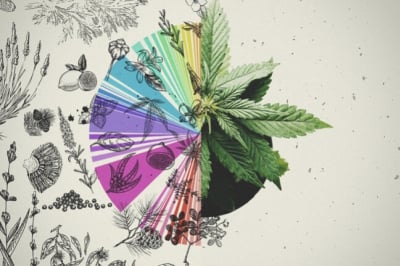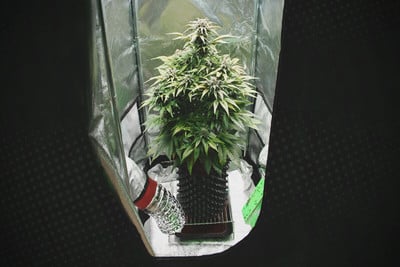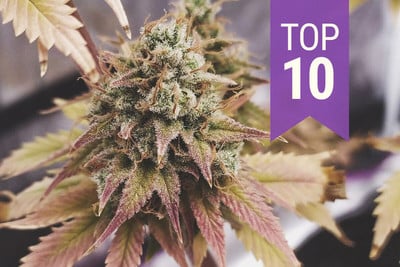.

What You Need to Know About THCB
Everyone knows about THC, but have you heard of THCB? Almost identical to THC in chemical structure, it shares similar effects but could prove even more influential than the delta-9 variant we know and love. To find out what you need to know about the THCB cannabinoid, keep reading.
Contents:
Cannabis sativa is a complex species that contains hundreds of chemical compounds. Some of these you may be familiar with, including major cannabinoids such as THC and CBD, and perhaps even terpenes like limonene and beta-caryophyllene. However, many others exist alongside these more well-known chemical compounds, and it’s here that you’ll find the rather elusive THCB.
What Exactly Is THCB?
THCB, or tetrahydrocannabutol, is a minor cannabinoid that accounts for less than 1%[1] of the cannabinoids found in raw cannabis plant material. Italian researchers successfully isolated THCB[2] in 2019, quickly discovering that it has a higher affinity for CB1 receptors (more on this shortly) than its THC counterpart.
While this affinity for CB1 receptors isn’t a phenomenon unique to THCB, the compound’s difference in size and shape compared to THC means it could present an entirely new avenue of therapeutic potential. However, before we get ahead of ourselves with chemical structures, binding affinity, and complex interactions, let’s examine the fundamentals of THCB, starting with the most basic of questions: what exactly does THCB do?
What Are the Effects of THCB?
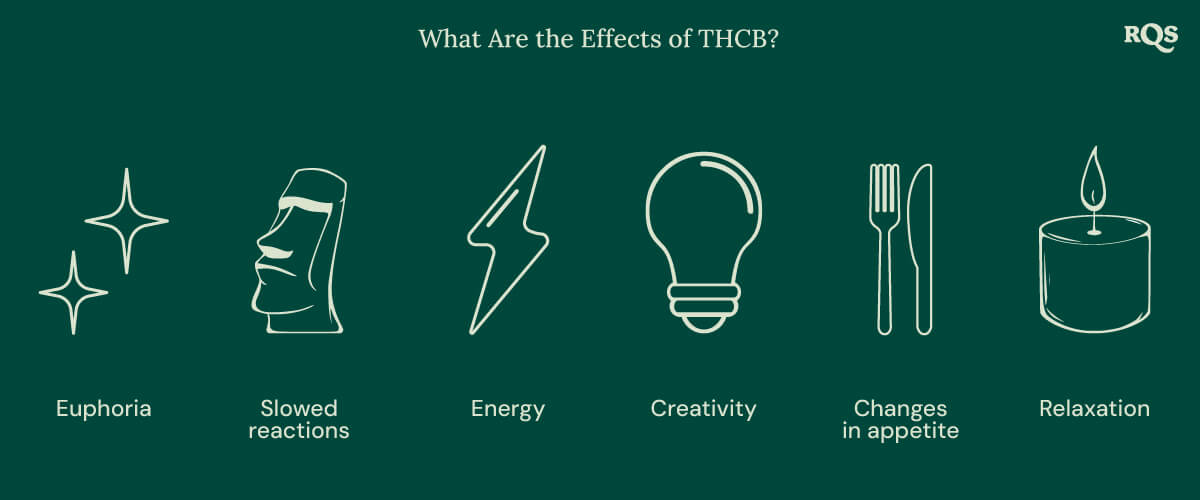
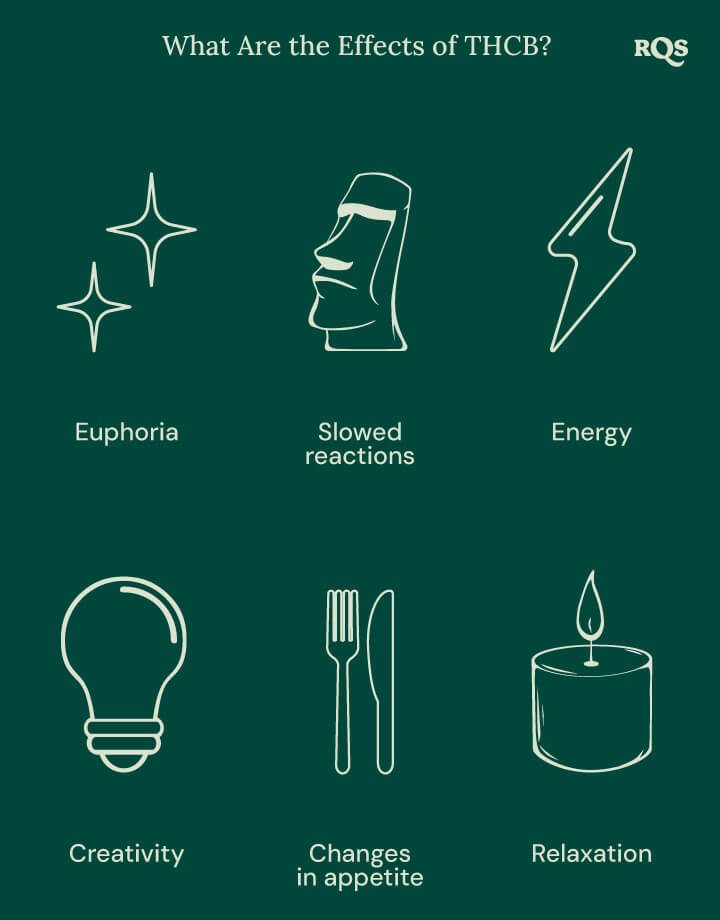
To understand the possible influence of THCB, we need to understand some basics of cannabinoid chemical structure. THCB is known as a homologue of THC, which means it shares a remarkably similar chemical structure. The only difference between THCB and THC at a molecular level is that the former has a butyl side chain (four carbon atoms), while the latter has a pentyl chain with five carbon atoms. Essentially, this slight difference means that most of the effects between the two are incredibly similar.
The effects of THCB include:
- Euphoria
- Slowed reactions
- Energy
- Creativity
- Changes in appetite
- Relaxation
Now, if those effects seem familiar, it’s because they are! THC has an almost identical influence on the mind and body. However, provisional research suggests that THCB may be slightly more potent than THC while also having a stronger influence on anti-inflammatory and anti-analgesic mechanisms.
Is THCB Stronger Than THC Delta-9?
According to early research, yes. THCB exhibits a stronger affinity for CB1 receptors, and it’s this interaction in the brain that causes the effects outlined above (what we know collectively as “getting high”). However, we should point out that research into THCB is incredibly scarce. And for experienced cannabis users, you’ll probably find that THCB feels almost identical to THC.
Unfortunately, as THCB makes up less than 1% of the cannabinoid content of raw plant material, this means that it simply isn’t feasible for researchers or cannabis companies to extract and isolate THCB from cannabis flowers. Instead, they have to synthesise the cannabinoid in a lab, using various precursor molecules.
THCB vs THC
Given how closely related THC and THCB are, you might think there isn’t much need for a detailed comparison. However, there are some subtle differences separating the two compounds, as outlined below.
| THCB | THC |
|
Butyl chain with four carbon atoms |
Pentyl side chain with five carbon atoms |
| Accounts for less than 1% of cannabis’ chemical structure | Accounts for up to 30% of cannabis’ chemical structure |
| Must be synthesised in a laboratory |
Easily isolated from plant material with solvent-based and solventless extraction methods |
| Psychoactive |
Psychoactive |
| Primarily binds to CB1 receptors |
Primarily binds to CB1 receptors |
| Recreational and therapeutic potential |
Recreational and therapeutic potential |
| Nebulous legal status | Prohibited in many parts of the world |
| THCB | THC |
|
Butyl chain with four carbon atoms |
Pentyl side chain with five carbon atoms |
|
Accounts for less than 1% of cannabis’ chemical structure |
Accounts for up to 30% of cannabis’ chemical structure |
|
Must be synthesised in a laboratory |
Easily isolated from plant material with solvent-based and solventless extraction methods |
|
Psychoactive |
Psychoactive |
|
Primarily binds to CB1 receptors |
Primarily binds to CB1 receptors |
|
Recreational and therapeutic potential |
Recreational and therapeutic potential |
|
Nebulous legal status |
Prohibited in many parts of the world |
At present, the main differences are the degree to which these compounds bind with CB1 receptors, and the effects this has on internal bodily functions such as inflammation and pain management[3].
What’s the Difference Between THCA and THCB?
Another common comparison is between THCB and its alphabetically superior sibling, THCA. Interestingly, it’s more than just a letter that separates these two compounds. While THCB has similar intoxicating effects to THC, THCA does not interact with CB1 receptors in a way that causes a high. Indeed, THCA is a precursor to THC and must be decarboxylated (heated) in order to exhibit intoxicating effects.
Aside from the differences in effects, THCA represents nearly 90% of the total THC content found in cannabis plants, making it far more abundant than the elusive THCB. Of course, without THCA, we wouldn’t have THC at all, so you shouldn’t dismiss the cannabinoid acid just because it does not produce a high in its “raw” state.
THCA may have its own soothing and neurological effects, making it a useful wellness compound.
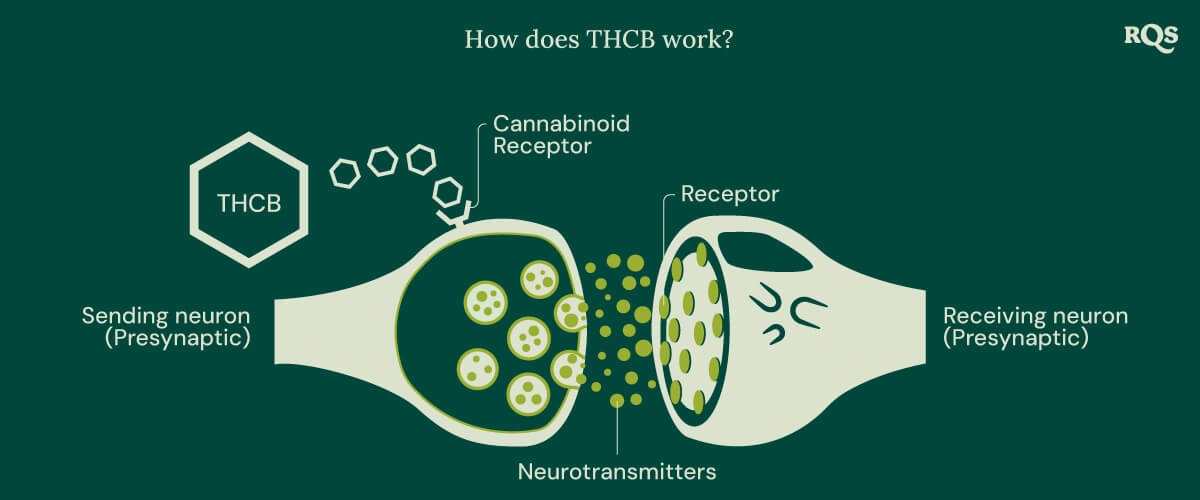
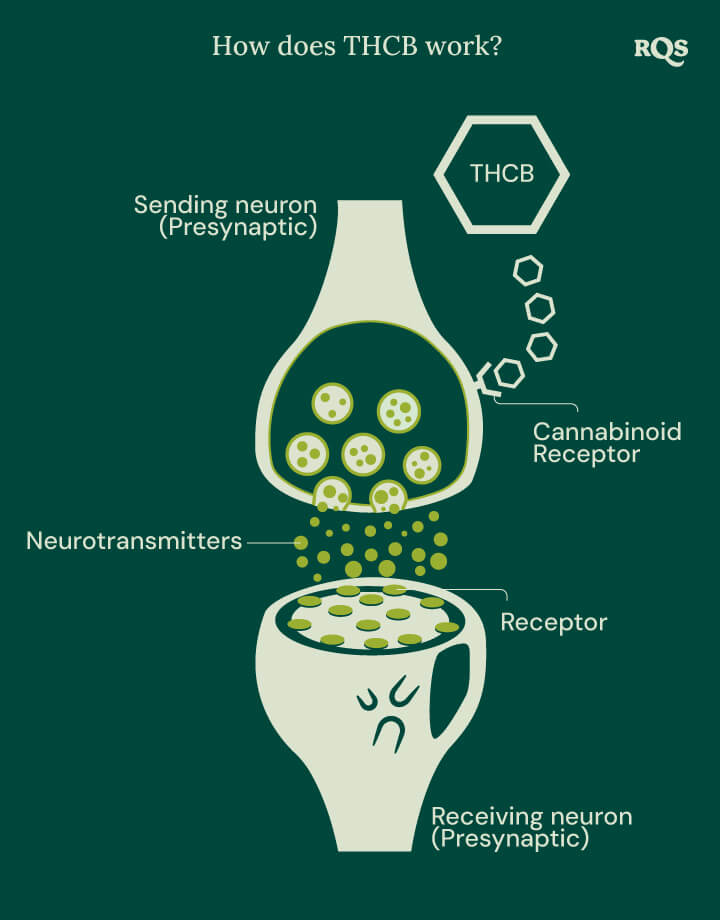
Is THCB Legal?
The legal status of THCB is cloudy at best. While THC is widely prohibited, THCB derived from industrial hemp is federally legal in America, under the US Farm Bill. In Europe, matters are less clear, although currently THCB is not a controlled substance. Of course, this can vary from country to country, and may change in the near future, so you should always check the regulations in your area before trying to purchase THCB.
As for the rest of the world, THCB’s legality falls into a grey area. Just remember that the level of THCB in cannabis flower is almost undetectable, so any THCB products you purchase are synthesised in a lab as opposed to being extracted from live plant material.
Does THCB Show Up on a Drug Test?
If you do manage to get hold of THCB-exclusive products, then drug testing becomes a concern. While the compound may be legal to buy and use in many parts of the world, there is a chance it will show on a drug test, given how similar in chemical structure it is to THC. The problem is that while drug tests aren’t looking for THCB specifically, you may end up triggering a false positive. As is often the case with derivatives of THC, the best way to pass a drug test is abstinence.
The World of Cannabinoids Continues to Grow
We may not know much about THCB, but it represents another step towards a better understanding of cannabinoids in their entirety. It also highlights the vast potential of cannabis, outside of just getting high, and helps to push the plant one step closer to being a candidate for therapeutic treatments. As for THCB specifically, much more research is needed to understand whether the compound's increased binding affinity for CB1 receptors can be leveraged to offer something that THC doesn’t.
However, given the difficulty in isolating THCB, it may be some time before we understand the full scope of the compound's effects. In the meantime, just remember that THCB levels in cannabis flower are negligible, so you’ll need to focus on THCB products synthesised in a laboratory if you want to experience the cannabinoid yourself.
- A novel phytocannabinoid isolated from Cannabis sativa https://www.ncbi.nlm.nih.gov
- Isolation of a High-Affinity Cannabinoid for the Human CB1 Receptor https://pubs.acs.org
- Phytocannabinoid Pharmacology: Medicinal Properties of Cannabis sativa Constituents Aside from the “Big Two” https://coloradochromatography.com


























